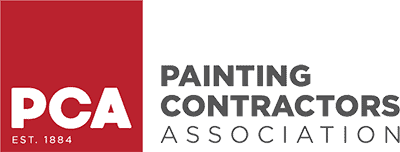The small details often make a significant impact when it comes to house interior painting. Achieving a perfect finish involves more than just slapping paint on walls; it requires careful planning, the right tools, and a keen eye for detail.
This blog will uncover the hidden rules for interior painting that can transform your home and ensure a professional, long-lasting result. These tips will help you navigate the nuances of painting projects and enhance your home’s aesthetics.
Key Takeaways
- Preparation is Key
- Choosing the Right Tools
- Priming for Perfection
- Mind the Temperature and Humidity
- Cutting In
- Apply Paint in Thin, Even Coats
- Use the “W” Technique with Rollers
1. Preparation is Key
One of the most crucial hidden rules for house interior painting is thorough preparation. This step is often overlooked but sets the foundation for a flawless finish. Proper preparation involves:
- Cleaning the Walls: Dust, dirt, and grease can prevent paint from adhering correctly. Clean the walls with a mild detergent solution and let them dry completely.
- Repairing Imperfections: Fill holes, cracks, and dents with a spackle or a suitable filler. Sand the repaired areas smoothly to ensure an even surface.
- Protecting Surfaces: Use painter’s tape to cover baseboards, trim, and any areas you don’t want to paint. Lay down drop cloths to protect the floor.
2. Choosing the Right Tools
The tools you use can significantly impact the quality of your paint job. Investing in high-quality brushes, rollers, and painter’s tape can make all the difference.
- Brushes: Use angled brushes for cutting around edges and trim work. A good brush will hold more paint and provide a smoother finish.
- Rollers: Choose the proper roller nap for your wall texture. A thicker nap is better for textured walls, while a thinner nap is ideal for smooth surfaces.
- Painter’s Tape: High-quality painter’s tape will prevent paint from bleeding and ensure clean, sharp lines.
3. Priming for Perfection
Priming is an essential step that many DIY painters skip. However, using a primer is one of the hidden rules for house interior painting that can drastically improve your results.
- Seal the Surface: Primer seals the surface, providing a uniform base for the paint. It also helps cover stains and previous colors, ensuring the topcoat looks even and vibrant.
- Enhance Adhesion: Primer improves the paint’s adhesion, reducing the risk of peeling and chipping over time.
4. Mind the Temperature and Humidity
Environmental conditions can affect the outcome of your painting project. Ideal conditions for house interior painting are:
- Temperature: Paint typically adheres best in temperatures between 50°F and 85°F (10°C and 29°C). Extreme temperatures can affect the drying process and finish.
- Humidity: High humidity can slow drying and lead to a sticky finish. Aim for a humidity level of 40-70% for optimal results.
5. Cutting In
Cutting in is painting along edges and corners before using a roller for the larger surfaces. This step is crucial for a professional finish.
- Start with the Edges: Use an angled brush to paint a 2-3 inch strip along edges, corners, and trim. This creates a buffer zone for the roller and ensures clean lines.
- Feather the Edges: Feathering the edges with the brush helps blend the brushed and rolled areas, preventing visible lines.
6. Apply Paint in Thin, Even Coats
Applying multiple thin coats of paint rather than one thick coat is crucial for achieving a smooth, durable finish.
- First Coat: The coat might look uneven and patchy, but don’t worry. This is normal and will be corrected with subsequent coats.
- Drying Time: Allow each coat to dry completely before applying the next. Follow the paint manufacturer’s recommendations for drying times.
7. Use the “W” Technique with Rollers
The “W” technique is a proven method for applying paint evenly with a roller.
- Start with a “W”: Load the roller with paint and start by making a “W” shape on the wall.
- Fill In: Without lifting the roller, fill in the “W” with horizontal and vertical strokes. This technique helps distribute the paint evenly and prevents roller marks.
Transform Your Home with Professional Interior Painting
Following these hidden rules for house interior painting can help you achieve a flawless finish that transforms your home. Each step is vital in the final outcome, from thorough preparation to applying paint in thin, even coats. Attention to detail and using the right tools can make a significant difference in the quality and longevity of your paint job.
If you’re seeking expert assistance with your interior painting projects, contact If Walls Could Talk at (860) 530-2744 for a free estimate. Our skilled team is dedicated to providing high-quality painting services that enhance the beauty and value of your home. Don’t wait—call us today and experience the difference professional painting can make!



